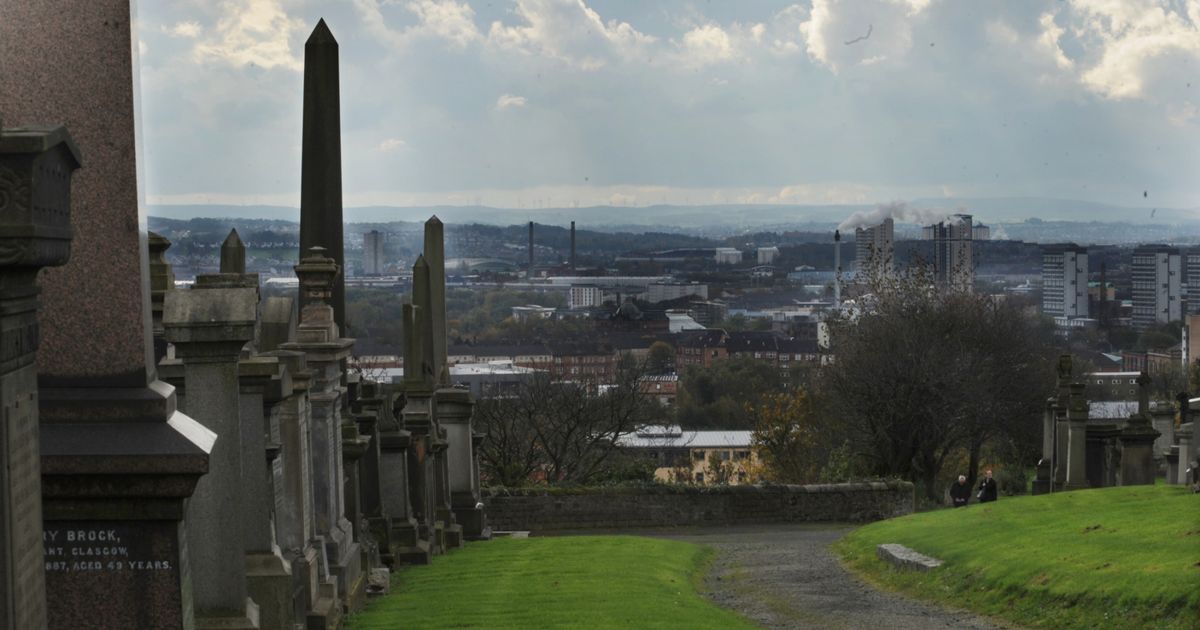Join thousands of people who have subscribed to the weekly Scotland Now menu for news on Scottish heritage and culture.
Perched on a hill at the eastern end of Glasgow is one of the city’s most atmospheric scenery.
Popular with walkers, tourists and those interested in the history of the city, the necropolis is the last resting place for more than 50,000 people, adding some of the most disgustingly wealthy sons and daughters in the region.
The Victorian Garden Cemetery is located opposite Glasgow’s iconic Cathedral, Wellpark de Tennent.
Originally an arboretum and a park of the early nineteenth century, where trees such as Scottish fir trees (hence the so-called Fir Park), elms and willows were planted, later destined for a cemetery in the 1830s.
According to the Friends of the Necropolis website, in 1831, John Strang, Chamberlain of Merchants’ House, wrote that the park “adapted admirably” to create Glasgow’s own edition of the famous cemetery in Paris.
He added that this new necropolis (the people of the dead) would provide “highly sought after” and “respectful” housing to the categories and provide a lucrative source of benefits to the House of Charity Merchants.
After a festival to see who can provide the design of the site, two brothers, one living in Glasgow and the other in Edinburgh, won the first prizes.
Designed to be a multi-religion cemetery, the first user to be buried in fact Jewish, with jeweler Joseph Levi buried in 1832.
The following year, the first Christian burial was that of Elizabeth Miles, mother-in-law of the then superintendent, George Mylne.
Since then, 50,000 burials have been made in the necropolis (the death record can be discovered in the Mitchell Library) and a maximum of 3,500 tombs were built up to 14 feet deep, with thick stone walls.
In 1966, Traders ‘ House entrusted the necropolis to Glasgow City Council, which maintains and maintains it.
In addition to the history of Commonwealth war graves, the cemetery has highlighted residents.
In addition to former Lord Provosts, policemen, artists, shipbuilders, lawyers and architects, the Necropolis is the ultimate resting place for:
The magician and theater owner David Prince Miller, who many Adelphi theaters.
Prof Francois Foucart, professor of fencing at the Royal French Academy in Paris.
The Tennent family, the founder of the Hugh Tennent brewery, with their graves in front of the brewery.
The Scottish poet William Miller, the guy who gave us the children’s song Wee Willie Winkie.
Isabella Ure Elder, altruist and philanthropist, who donated her own cash to build a library, an Array hospital and even an infirmary in Govan.
Today 37 acres, the necropolis is the greenest time in glasgow city centre.
Popular with walkers, it also hosts wildlife, adding a herd of deer.
The view from the hill at the most sensitive of the cemetery encompasses some of Scotland’s largest spraying suburbs and is well valued a short walk from the city centre.
Glasgow’s Friends of the Necropolis organize a variety of personal (and personalized) walking tours and audiences that can be booked throughout the year: tours@glasgownecropolis. org.
The picturesque cemetery is the setting for some featured films.
Earlier this year, teams settled around the necropolis when Robert Pattison’s “The Batman” arrived in the city.
Director Matt Reeves has filmed scenes with a double running for twilight star Matt Reeves, who will play the role of Bruce Wayne and Batman in the new film.
Actress Karen Gillan saw “Not Another Happy Ending” film there, while Harvey Keitel’s Death Watch also used the cemetery and nearby cathedral as a backdrop.

